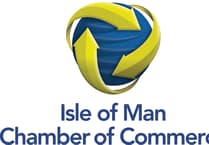An investigation into the collapse of Old Laxey bridge has highlighted shortcomings in inspection and maintenance.
The report by independent consultants found a best-practice inspection regime was not followed and the responses to reported serious defects were slow.
Torrential rain in December 2015 devastated homes and businesses in the village and washed away the historic three-arch stone bridge dating back to 1744.
Photographs of a double decker bus that fell into the river became the defining image of that extreme weather event which was part of Storm Desmond.
A report by Graham Cole Consultancy Ltd, dated September 30 this year, has been released under Freedom of Information by the Department of Infrastructure.
It concludes: ’A number of shortcomings in the management of highway structures has been noted.
’In particular, a best practice inspection regime was not followed and the response to reported defects was slow.’
Lower Old Laxey’s bridge collapsed in the late afternoon of December 3. An empty school bus had stopped on the bridge as it started to give way.
Fortunately, the driver was able to get out and move to a place of safety before the double decker plunged into the water below.
The consultant’s report found the extreme weather created ’scour effects’ exacerbated by a build up of debris.
’The bridge was almost certainly severely weakened by the loss of support to both piers due to scour,’ it says.
Swamping of the bridge causing the washing out of backfill could also have been a contributory factor.
Inspection reports had identified scour defects since 2007, the report found.
Inspections in 2013 and 2015 both recommended major maintenance works which were never carried out.
The 2013 inspection report noted a ’large and developing scour hole’ which was ’likely to threaten the pier foundation if left’.
It found that scour of the central arch had developed and needed to be ’addressed with high priority’ that year.
But the inspection report from May 2015 again notes the high priority need to address the scouring of the central arch that year.
In the event the works were planned - too late - for the summer of 2016.
The consultants say it is unclear to what extent the previously reported defects contributed to the failure and partial collapse - but they may have been a contributory factor.
A severity score of the defects given by the inspectors in 2013 and 2015 indicated elements of the bridge were suffering ’very significant stress’ - and that there was apparent ’alarming decline’ over the four years from 2011.
The consultants interpret this as a failure, or possible failure, of a critical element that may have severely affected the bridge’s capacity and may have required a weight restriction or for it to be closed to traffic.
Inspection reporting differed from the industry standard, the report notes.
It states: ’It is unclear why inspections were not carried out in 2003 and 2009.
’There is no evidence to suggest a principal inspection was actually carried out in 2001.
’Subsequent principal inspections at the normal six-year intervals were not carried in 2007 and 2013.’
Computer modelling showed that the deflected shape of the bridge, loss of mortar, potential saturation and loss of backfill may have been sufficient for the empty bus to precipitate the collapse.
Photographs of the bridge collapse show fallen trees and other debris had accumulated across the second and third spans.
The consultants say it is unclear whether the debris was present before the collapse or whether this had built up because of the bus in the river channel.
In an addendum to the report, the Department of Infrastructure says that at the time of the collapse, all bridges were being inspected every two years and the regime followed the service level agreement.
The highway service division is currently modifying its structural asset management procedures and staffing, it adds.
A replacement steel and concrete bridge, flat rather than arched and featuring pepper-pot lighthouse sculptures, opened in September 2016.




